Charger Skilhunt M4D
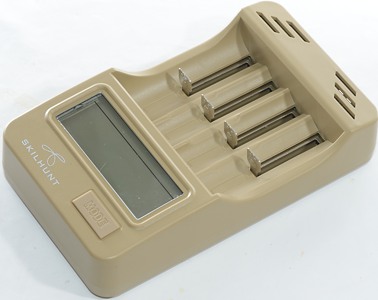

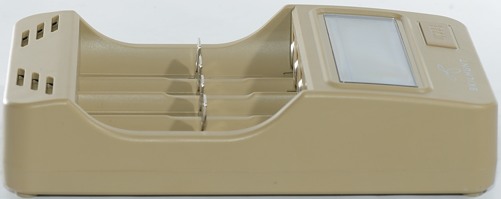
Skilhunt usual sells flashlights, but has recently started on chargers. This charger is a universal 4 channel charger that can handle multiple chemistries and battery sizes. It does also work as a power bank.
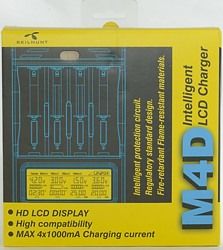

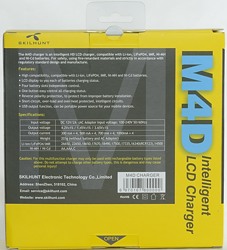

I got the charger in a cardboard box with lots of information on.
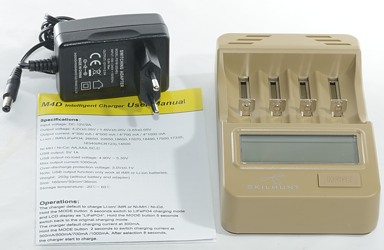
The box contains the charger, a power supply and a instruction sheet.

The charger has a barrel connector for 12V power input and a usb output connector for power bank function.
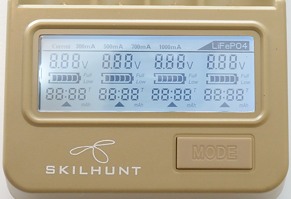
The user interface is a display and a single multi-function button.
Fast presses on the button will change the display between hour:min and capacity display.
Holding the button down for two seconds will change the current one step (300/500/700/1A) for all slots.
Holding the button down for 5 seconds will select LiFePO4 for all slots.
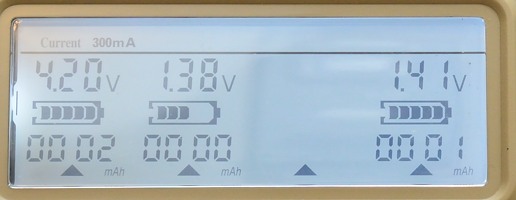
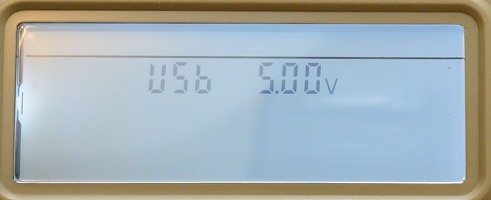
First display shows normal charging with 300mA, one LiIon and two NiMH cells.
The second displays shows that the power bank function has been activated (it will not stay on).
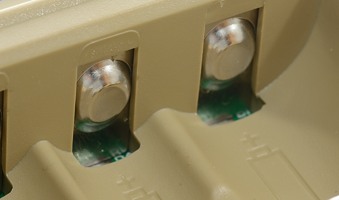

The charger uses the common slider construction and will handle batteries from 31 mm to 71 mm, this means just about any cell.
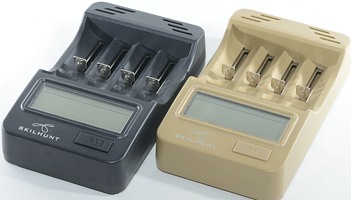
The charger exist in both the usual black and a sand colored one.


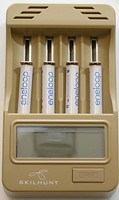
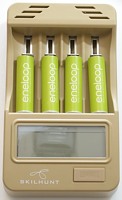
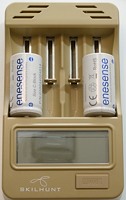

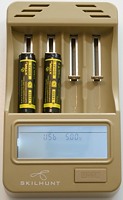
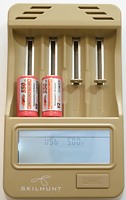
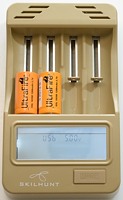
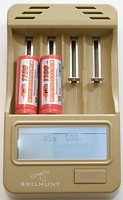
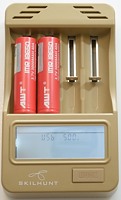
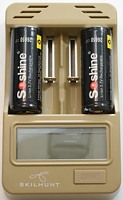
Measurements
- Discharges LiIon batteries with 34mA when display is on and not connected to power.
- Discharges LiIon batteries with 0.7mA when display is off and not connected to power.
- Discharges NiMH batteries with 0.1mA when not connected to power.
- Charges LiIon batteries with 0.4mA when connected to power.
- Charges NiMH batteries with 2mA when connected to power.
- Will restart charging if voltage drops below 3.9 volt.
- Charger will restart charging after power loss, or battery insertion.
- Voltmeter is frozen when charging is finished.
- Voltmeter is withing 0.04 volt on LiIon range (Current=300mA).
- Voltmeter is withing 0.01 volt from 0.95 volt to 1.5 volt.
- With 0 volt on a battery the current is about 2.3mA, enough to reset protection.
- At about 0.5 volt battery voltage the charger will reconize the battery
- Above 2 volt the charger assumes LiIon.
LiIon
%20%231.png)
This looks like a good CC/CV charge curve with 100mA termination.
Display shows 2737mAh
%20%232.png)
%20%233.png)
%20%234.png)
The other 3 channels looks just as good.
Display shows 2749mAh, 2785mAh, 2653mAh
%20%231.png)
%20%231.png)
These two cells are also handled fine.
Display shows 2418mAh, 2878mAh
%20%231.png)
The older cell is no problem, but do, of course, take longer to charge.
Display shows 1956mAh
%20%231.png)
Here I am using 0.3A charge current, but the termination is still at 100mA, this is not ideal.
Display shows 2346mAh
%20%231.png)
%20%231.png)
The smaller cells charge fine at 0.5A, but I would have like a lower termination current.
Display shows 551mAh, 665mAh
.png)
All four channels charging at 1A, works nice.
.png)
Charging four LiIon cells requires nearly 2A from 12 volt.
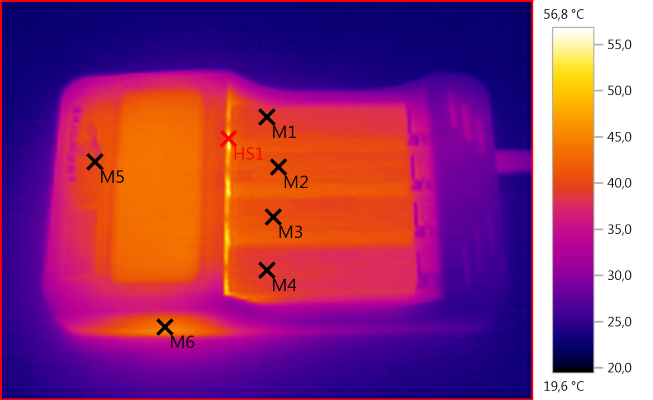
M1: 38,9°C, M2: 40,8°C, M3: 40,4°C, M4: 39,2°C, M5: 40,2°C, M6: 43,7°C, HS1: 56,8°C
Some heat is generated at 1A charge current, but not too much.
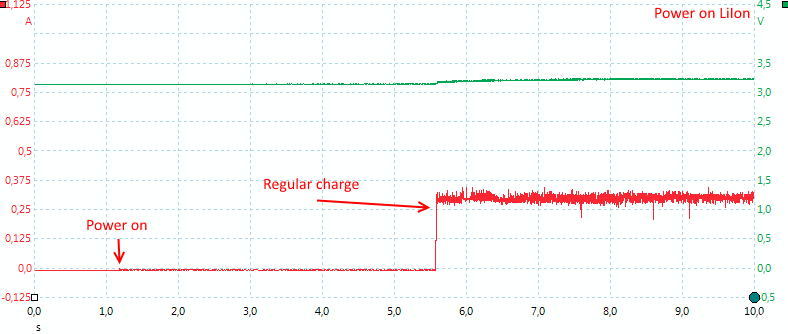
The charger is fairly fast to start and when powered on it will always start with lowest charge current.
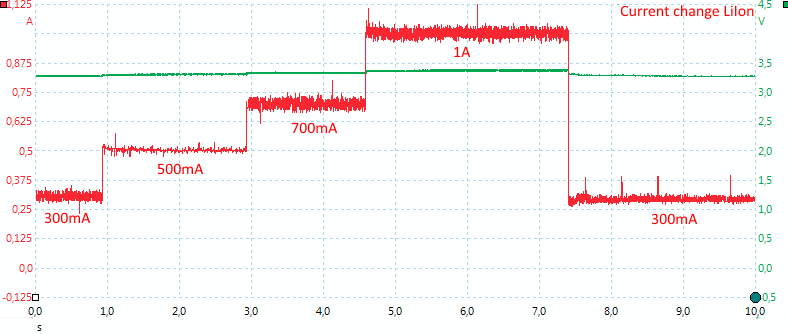
Charge current can be changed at any time, just hold down the button for about 2 seconds to select next current.
LiFePo4
Holding down the button for 5 seconds will select LiFePO4 mode for all slots, it is possible to change current.
When finished charging LiFePO4 cells the display will flash as a reminder to remove the cells.
%20%231.png)
This is a good LiFePO4 charge curve.
%20%231.png)
The AA sized cell is also charged good, but again I would have like a lower termination current.
NiMH
%20%231.png)
It looks like the charger terminates on voltage and may be a little bit early, but not much.
Display shows 1981mAh
%20%232.png)
%20%233.png)
%20%234.png)
The same on the other slots.
Display shows 1801mAh, 1991mAh, 1912mAh
%20%231.png)
%20%231.png)
On the XX a very small temperature raise can be seen, Pro has more temperature raise, i.e. they are full.
Display shows 2561mAh, 2659mAh
%20%231.png)
This cell is getting old and it is very hard to terminate correctly, the charged missed termination and filled 9000mAh into the cell.
Display shows 9285mAh
%20%231.png)
A low current charge cannot terminate on -dv/dt, but because this charger uses voltage termination it terminates fine and soon after the cell is full.
Display shows 2018mAh
%20%231.png)
The AAA cell do also look fine.
Display shows 718mAh
%20%231.png)
Terminating on voltage, it can detect a full battery very fast.
Display shows 28mAh
.png)
Four cells at 1A is handled just as fine as one cell, except everything gets a bit warmer.
.png)
Charging four NiMH batteries requires about 1A from 12 volt..
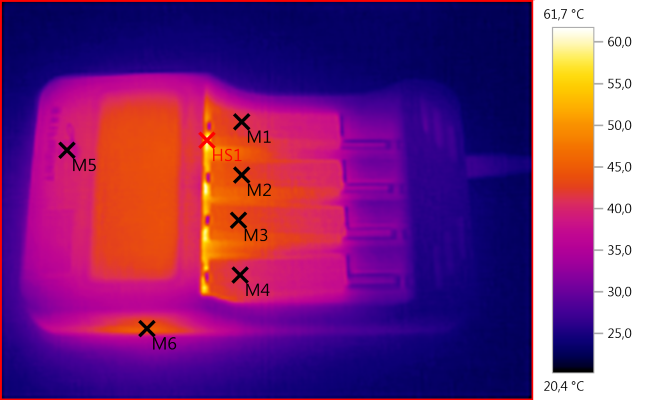
M1: 41,5°C, M2: 43,5°C, M3: 43,0°C, M4: 40,7°C, M5: 38,3°C, M6: 44,9°C, HS1: 61,7°C
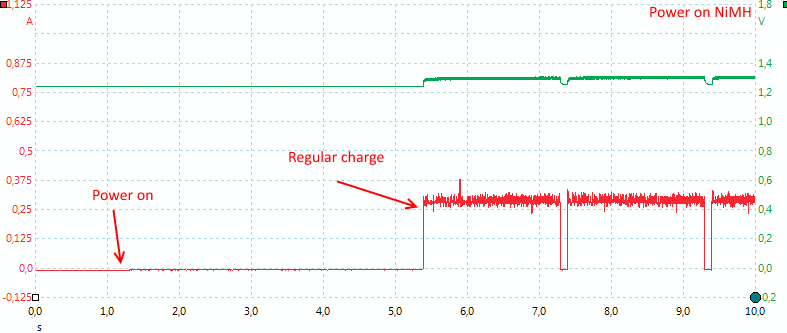
Again about 4 seconds in startup time.

The current can be changed at any time by holding the button down for about 2 seconds.
With NiMH the charger turns the current off to measure voltage.
Power bank
- USB output is coded as Apple 1A.
- USB output is off when power is connected.
- USB output will turn off in 10 seconds when load is below 85mA.
- The power bank uses all mounted batteries.
%20%231%20load%20sweep.png)
The usb output can maintain voltage to a bit above 1A and the overload protection will kick in at about 1.4A
%20load%20sweep.png)
With more batteries in the charger, the output voltage is maintained to a higher current, but the overload protection is the same.
%20%231%20usb%20out%2010ohm.png)
With one battery the power bank output looks very good at 0.5A load.
%20%231%20usb%20out%205ohm.png)
But totally hopeless with 1A load.
%20usb%20out%205ohm.png)
Using four batteries for 1A load will help, but it is not perfect.
Note: My efficiency curve is not valid, battery voltage and battery current is only for one of the four cells.

The noise is very low at 0.5A: 6mV rms and 65mVpp

With a fresh battery it is also very low at 1A: 8mV rms and 80mVpp, but as can be seen above the output gets unstable when the batteries runs down.
Testing with 2500 volt and 5000 volt between mains and low volt side, did not show any safety problems.
Conclusion
The charger is good at LiIon including LiFePO4. Generally it also do a good job on NiMH.
The power bank function only works for low current charging, I wonder why it uses the Apple 1A coding, even Apple has switched to usb charger coding for 1A.
As a charger I will call it good.
Notes
The charger was supplied by Skillhunt for a review.
Here is an explanation on how I did the above charge curves: How do I test a charger
Read more about how I test USB power supplies and chargers



























%20%231.png)
%20%232.png)
%20%233.png)
%20%234.png)
%20%231.png)
%20%231.png)
%20%231.png)
%20%231.png)
%20%231.png)
%20%231.png)
.png)
.png)



%20%231.png)
%20%231.png)
%20%231.png)
%20%232.png)
%20%233.png)
%20%234.png)
%20%231.png)
%20%231.png)
%20%231.png)
%20%231.png)
%20%231.png)
%20%231.png)
.png)
.png)



%20%231%20load%20sweep.png)
%20load%20sweep.png)
%20%231%20usb%20out%2010ohm.png)
%20%231%20usb%20out%205ohm.png)
%20usb%20out%205ohm.png)

